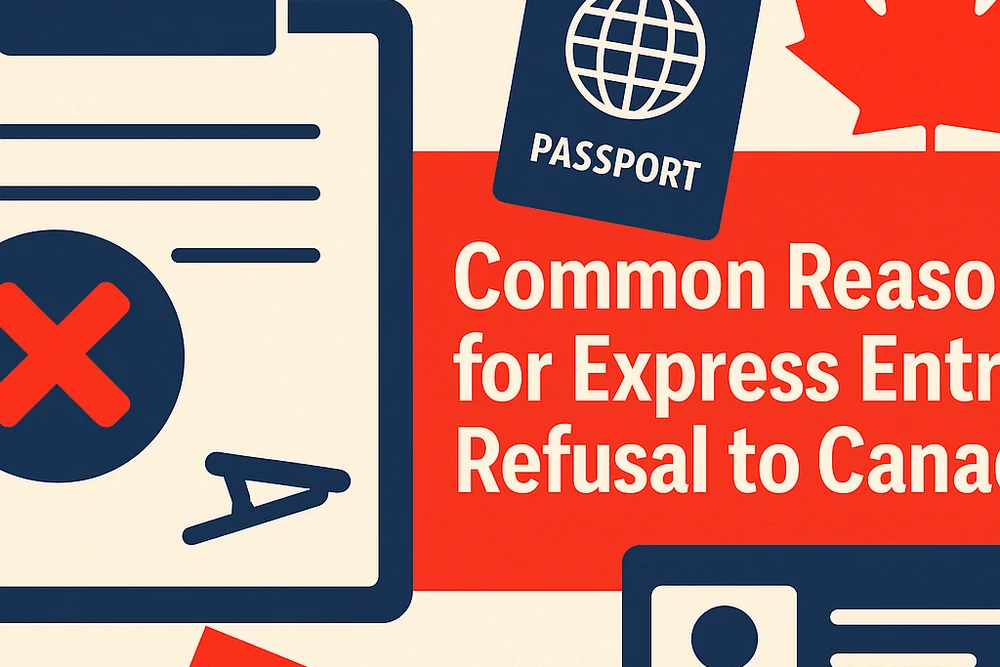Advertisements
Migrating to Australia as a medical doctor offers a rewarding opportunity to practice in a world-class healthcare system while enjoying a high quality of life. With a growing demand for doctors, especially in rural and regional areas, Australia welcomes International Medical Graduates (IMGs) through structured pathways. However, the process involves navigating medical registration, visa applications, and job placement, which can be complex. This comprehensive guide outlines the steps, requirements, and practical tips to successfully migrate as a medical doctor in 2025, ensuring compliance with Australian standards and a smooth transition.
Why Migrate to Australia as a Doctor?
Australia’s healthcare system is renowned for its high standards, advanced facilities, and competitive remuneration (e.g., AUD 150,000–400,000 annually for specialists). The country faces a projected shortage of 9,298 full-time General Practitioners (GPs) by 2030, creating opportunities for IMGs, particularly in rural areas with incentives like higher salaries and visa pathways to permanent residency (PR). Migrating offers professional growth, work-life balance, and a multicultural environment, but requires careful planning to meet regulatory and immigration requirements.
Key Benefits:
- Career Opportunities: High demand for doctors, especially in regional areas (e.g., AUD 20,000–50,000 in relocation incentives).
- Lifestyle: Safe cities (Sydney ranked 5th safest globally), cultural diversity, and a relaxed work-life balance.
- Permanent Residency: Pathways to PR after 2–3 years on temporary visas.
- Challenges: High cost of living (e.g., AUD 3,000/month in Sydney), 10-year moratorium for IMGs in rural areas, and rigorous assessments.
Step-by-Step Guide to Migrating to Australia as a Medical Doctor
Step 1: Verify Your Medical Qualifications
Why it matters: Your medical degree must meet Australian standards to practice.
- How to do it:
- Submit your medical degree and postgraduate training for assessment by the Australian Medical Council (AMC). This involves Primary Source Verification (PSV) via the Educational Commission for Foreign Medical Graduates (ECFMG).
- Specialists must apply to the relevant medical college (e.g., Royal Australasian College of Physicians, Royal Australasian College of Surgeons) for a Comparability Assessment, which may require additional exams or bridging programs.
- Check if your degree is from a recognized medical school on the AMC website. Degrees from the UK, Ireland, or Canada often qualify for the Competent Authority Pathway, simplifying registration.
- Example: A UK-trained GP used the Competent Authority Pathway, bypassing AMC exams, and gained registration in 6 months.
Pro Tip: Start PSV early, as it takes 2–4 months. Contact ExpatMD for assistance with credential verification.
Step 2: Demonstrate English Language Proficiency
Why it matters: Proficiency in English is mandatory for patient safety and registration.
- How to do it:
- Pass an approved English test: International English Language Testing System (IELTS) Academic (minimum 7.0 in each band) or Occupational English Test (OET) (minimum B in each component).
- Exemptions apply if your medical education was in English in countries like the UK, USA, or Canada.
- Submit results to the AMC and the Australian Health Practitioner Regulation Agency (AHPRA).
- Example: A Pakistani doctor passed the OET with B scores in 2024, meeting AHPRA requirements in one attempt.
Pro Tip: Prepare for OET, as it’s tailored for medical professionals. Resources are available on OET’s website.
Step 3: Obtain Medical Registration
Why it matters: Registration with the Medical Board of Australia (MBA) via AHPRA is required to practice.
- How to do it:
- Choose a registration pathway based on your qualifications:
- Competent Authority Pathway: For IMGs from the UK, Ireland, USA, Canada, or New Zealand with recognized training. Leads to general registration after verification.
- Standard Pathway: For other IMGs. Requires passing the AMC Multiple-Choice Questionnaire (MCQ) exam and Clinical Exam or a Workplace-Based Assessment (WBA). Takes 12–24 months.
- Specialist Pathway: For specialists seeking recognition. Involves college assessment and possible supervised practice.
- Short-Term Training Pathway: For specialists training in Australia for up to 24 months, not leading to full registration.
- Apply for registration via AHPRA. Provide AMC certification, English test results, and proof of a job offer (if required).
- Specialists may need a Health Workforce Certificate (HWC) for rural positions.
- Choose a registration pathway based on your qualifications:
- Example: A US-trained family physician used the Competent Authority Pathway, securing general registration in 8 months after AHPRA verification.
Pro Tip: Engage a migration agent like VisaEnvoy to navigate AHPRA requirements.
Step 4: Secure a Job Offer
Why it matters: A job offer is often required for visa sponsorship and registration.
- How to do it:
- Search for jobs on platforms like Seek, AMA Recruit, or NSW Rural Doctors Network.
- Contact medical recruitment agencies like Remedium Partners or MedRecruit for personalized support.
- Focus on Designated Areas of Need (DPA) in rural regions for higher demand and visa incentives. Rural positions may offer AUD 20,000–50,000 relocation bonuses.
- Network with Australian medical professionals via LinkedIn or events like the AMC International Medical Graduate Conference 2025.
- Example: An Indian GP secured a job in a rural Queensland clinic, which sponsored their visa and provided AUD 30,000 in relocation support.
Pro Tip: Cold-email hospitals or clinics in regional areas, as they often have openings and may cover recruitment agency fees.
Step 5: Apply for a Visa
Why it matters: A valid visa is essential to work legally in Australia.
- How to do it:
- Choose the appropriate visa via the Department of Home Affairs:
- Temporary Skill Shortage (TSS) Visa (Subclass 482): Most common for doctors. Requires employer sponsorship, valid for up to 4 years. Cost: AUD 2,600–4,000. Pathway to PR after 2–3 years.
- Skilled Independent Visa (Subclass 189): Points-tested, no sponsorship needed. Ideal for permanent residency. Requires AMC assessment and EOI via SkillSelect.
- Skilled Nominated Visa (Subclass 190): Requires state/territory nomination. Adds points for PR eligibility.
- Employer Nomination Scheme (ENS) Visa (Subclass 186): Permanent residency via employer sponsorship.
- Regional Sponsored Migration Scheme (RSMS) Visa (Subclass 187): For regional areas, but closed to new applications since November 2019. Replaced by Subclass 494.
- Meet health, character, and age requirements (generally under 45, with exemptions for experienced doctors).
- Apply online via ImmiAccount. Submit AMC certificate, job offer, English test results, and health checks.
- Choose the appropriate visa via the Department of Home Affairs:
- Example: A Nigerian specialist obtained a TSS 482 Visa in 2024, sponsored by a Melbourne hospital, and applied for PR after 2 years.
Pro Tip: Consult a migration agent like Ten Heads Immigration for visa options. Start 6–12 months before relocation.
Step 6: Understand the 10-Year Moratorium
Why it matters: Overseas Trained Doctors (OTDs) and Foreign Graduates of Accredited Medical Schools (FGAMS) face a 10-year moratorium restricting Medicare billing unless working in a District of Workforce Shortage (DWS).
- How to do it:
- Apply for a Section 19AB exemption to work in a DWS (rural/regional areas) via DoctorConnect.
- Work in a DWS for 10 years to access Medicare Benefits Schedule (MBS) and prescribe under the Pharmaceutical Benefits Scheme (PBS).
- Example: A Bangladeshi IMG worked in a DWS in Alice Springs, accessing Medicare rebates after obtaining a 19AB exemption.
Pro Tip: Check DWS locations on DoctorConnect to plan your job search.
Step 7: Relocate and Settle In
Why it matters: Proper planning ensures a smooth transition to life in Australia.
- How to do it:
- Arrange accommodation near your workplace (e.g., AUD 2,000–4,000/month in cities). Use Domain or Realestate.com.au.
- Obtain a Medicare Provider Number from Services Australia to bill patients.
- Join professional networks like the Australian Medical Association (AMA) for support and CPD opportunities.
- Familiarize yourself with local culture, transport, and climate (e.g., tropical in Queensland, temperate in Victoria).
- Example: A UK doctor relocated to a regional NSW clinic, joined the AMA, and adapted to the “work-to-live” culture, enjoying 4 weeks of annual leave.
Pro Tip: Download the MyAus App for multilingual resources on Australian services.
Common Mistakes to Avoid
- Incomplete AMC Assessment: Failing to complete PSV or exams delays registration (30% of IMGs face delays).
- Wrong Visa Choice: Applying for a Subclass 189 without a job offer can lead to rejection.
- Ignoring DWS Requirements: Not working in a DWS restricts Medicare access for 10 years.
- Late Applications: Visa processing takes 3–12 months; start early to avoid missing job start dates.
- Insufficient Networking: Not connecting with recruitment agencies or colleagues limits job opportunities.
Checklist for Migrating to Australia as a Doctor
- Verify medical qualifications with AMC and relevant specialist colleges.
- Pass IELTS (7.0) or OET (B) for English proficiency.
- Apply for AHPRA registration via Competent Authority, Standard, or Specialist Pathway.
- Secure a job offer, preferably in a DWS for 19AB exemption.
- Apply for a visa (e.g., TSS 482, Subclass 189, or Subclass 190) via ImmiAccount.
- Obtain a Section 19AB exemption if required.
- Arrange accommodation, obtain a Medicare Provider Number, and join professional networks.
FAQ: Migrating to Australia as a Doctor
Q: How long does the migration process take?
A: 12–24 months, including AMC assessment (2–6 months), registration (3–12 months), and visa processing (3–12 months).
Q: What are the costs involved?
A: AMC exams (AUD 3,000–5,000), visa fees (AUD 2,600–4,000), English tests (AUD 350–600), and relocation (AUD 5,000–10,000).
Q: Can I apply for permanent residency?
A: Yes, after 2–3 years on a TSS 482 Visa, apply for Subclass 186 or 189. Age exemptions apply for doctors over 45 with rural experience.
Q: Are rural jobs mandatory?
A: Not mandatory, but DWS jobs ease visa approval and Medicare access. Metropolitan jobs are competitive.
Final Thoughts: Your Path to Practicing Medicine in Australia
Migrating to Australia as a medical doctor in 2025 is a challenging but achievable goal with proper planning. By verifying your qualifications with the AMC, securing AHPRA registration, obtaining a job offer, and applying for the right visa, you can join Australia’s thriving healthcare system. Focus on rural opportunities for faster pathways and incentives, and leverage resources like DoctorConnect and migration agents to streamline the process. Start your journey today to enjoy a rewarding career and Australia’s vibrant lifestyle!


